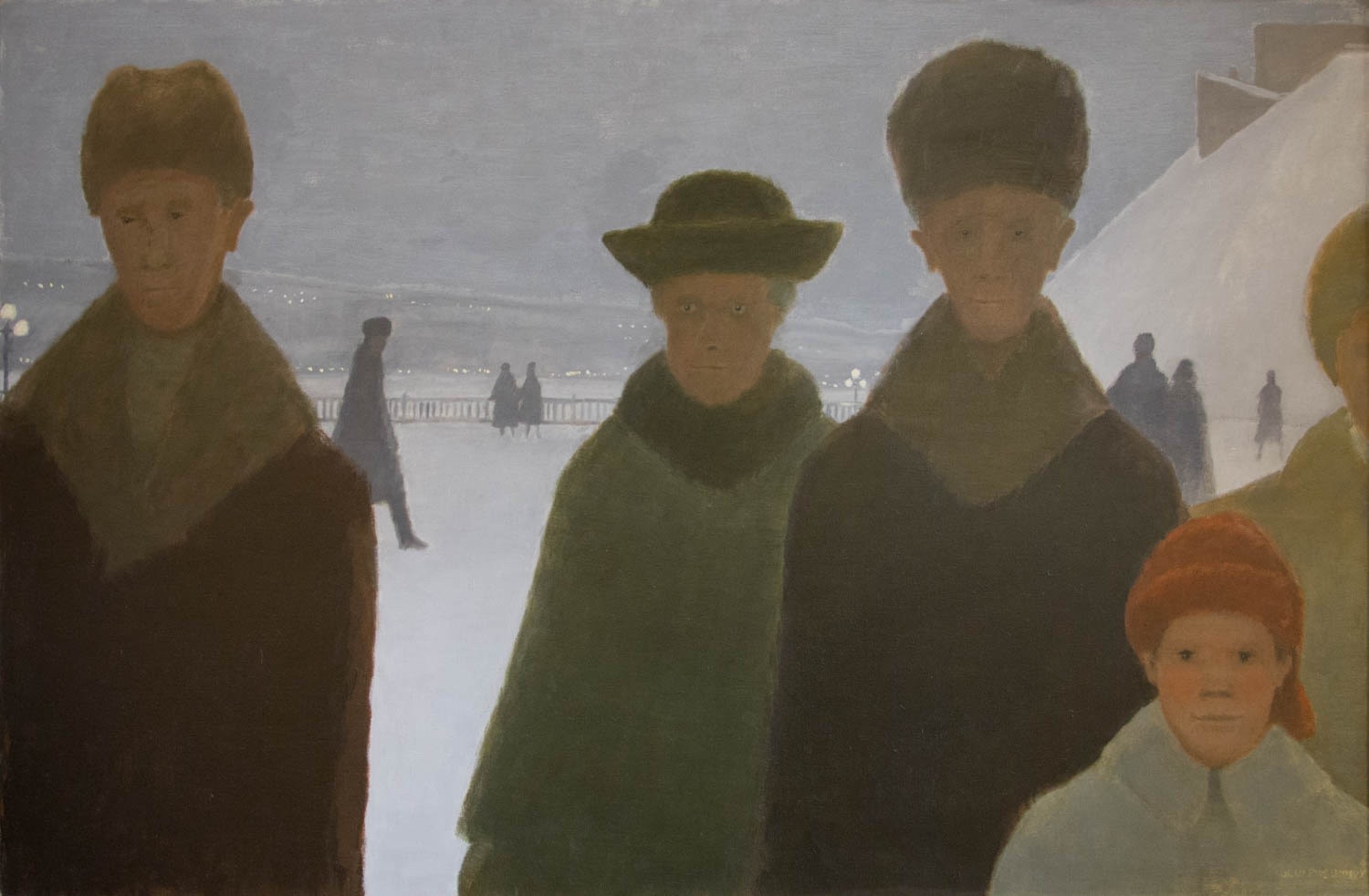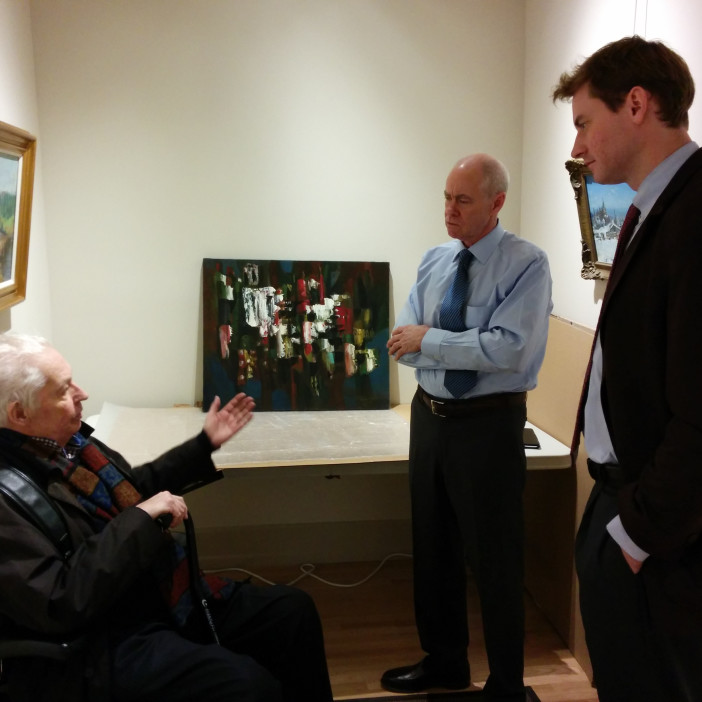Strange “visitors” in Jean Paul Lemieux’s Iconic "Dufferin Terrace" Scene
The Dufferin Terrace in Quebec City is a well known tourist attraction. Named after Lord Dufferin who was Governor of Canada from 1872 to 1878 it was built in 1838. From there, people have a breathtaking view of the Saint-Lawrence River, of the Île d’Orléans, and of the Traverse Québec-Lévis. The Château Frontenac is adjacent to it.

Jean Paul Lemieux has given a very unusual view of the Dufferin Terrace. First, he has represented it in winter. We see only two tourists far in the background looking at the ice floating on the river. The setting is a pretext for a group portrait, in which we see an old couple, a younger one and a child. As often in Lemieux’s paintings of that type, there is no interaction between the personages. Each one seems lost in his thoughts, not communicating with his neighbors. Lemieux is a painter of the presence, rather than of empathy or communication.

Jean Paul Lemieux, Dufferin Terrace, Quebec, 1967
Oil on canvas, 36 x 54 in
The framing of the group is interesting. It seems familiar because we are use to such type of framing in photography, when the camera excludes almost entirely a personage, like the young lady on the right, probably the mother of the child. It suggests that what we see is an instantaneous view, a short moment of time, and for the same reason, that the group of people is moving towards us. Even if the background is built as a lateral view frame on the right by the steep slope of the Cap Diamant, this is not the only orientation of the group portrait. The people are moving from to background to the front in a movement perpendicular to the lateral view of the Terrace. They are moving towards us, the viewers, imposing their presence to our attention. In comparison, the other small personages depicted are just shadows or silhouettes, just there as to create an effect of depth in space, under a blue grey sky.
Speaking of photography, it is known that Lemieux used often old photographs to depict the winter clothing of his personages. That is why these garments often seem a little outdated, like the hats of the old couple. It is a way to suggest also a certain absence of temporality of the scene. Lemieux is not a painter of anecdotes. He doesn’t tell a story. I am always struck by his metaphysical approach. One can almost say that he is after what the German philosopher Martin Heidegger used to call the Dasein, the being there, of his personages rather than their interactions by language or gesture with the others. This is gives a universal dimension to Lemieux’s paintings, and exclude him from any type of narrow regionalism. It is not surprising that he was very happy of the way his painting was received when he was exhibited in Moscow and Leningrad in 1974. Our painting was one of the exhibited there.
Finally, it is noticeable that the Lemieux’s palette is strictly control. The winter coats of the two men and of the two women look alike in their form but also by their colors, darker for the men, paler for the women. Only the bright face of the boy, and the red of his hat add an element in contrast. This parsimony of colors is a powerful mean of integration of the personages in the surface of the painting. One forgets the setting and get interested in these strange “visitors” for themselves, like Lemieux call them in other similar paintings.
François-Marc Gagnon
Concordia University




